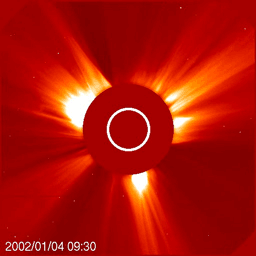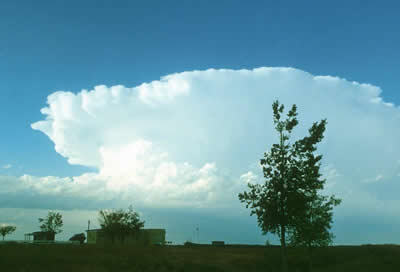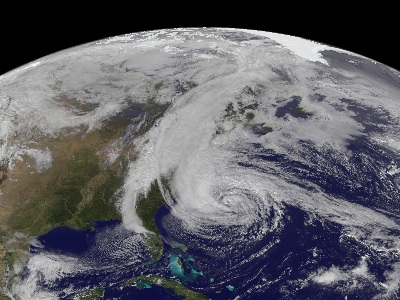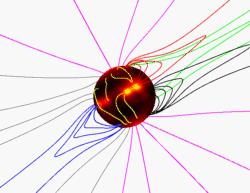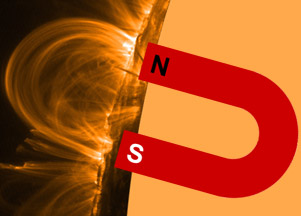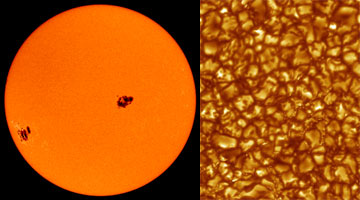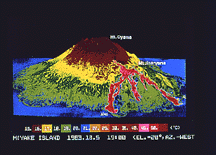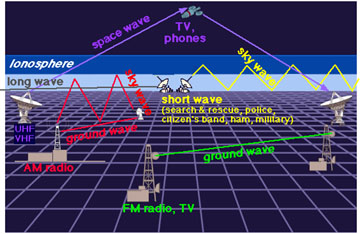Click on image for full size
Images courtesy SOHO (NASA & ESA). Animation by Windows to the Universe staff (Randy Russell).
Related links:
A CME blasts Comet NEAT as it passes the Sun
Video: Journey Beneath a Sunspot
Video: Dark Days Ahead for the Sun
Activity: Plotting Locations of Active Regions on the Sun
Activity: Tracking the Motion of an Active Sunspot Region
When Nature Strikes: Space Weather
When Nature Strikes: You Be the Solar Scientist! Classroom Activity
Solar Storms
On Earth, certain conditions in our atmosphere give rise to powerful storms - thunderstorms, blizzards, tornadoes, hurricanes, and the like. The Sun also has an atmosphere, and incredible storms that dwarf Earthly storms (in terms of the vast amounts of energy involved). Sometimes they blast forth from the Sun's surface into the solar atmosphere.
The two main types of storms on the Sun are solar flares and Coronal Mass Ejections (CMEs). The two are closely related, though scientists are still trying to work out the exact details of the relationship between flares and CMEs. Both are associated with tangled magnetic fields in the neighborhood of active regions on the Sun's surface. Like a rubber band that is twisted until it snaps, the tangled magnetic fields around an active region release energy when they "snap". The energy emitted in a matter of minutes by a solar flare can be as much as is associated with 100 hurricanes on Earth!
Solar flares emit energy in the form of electromagnetic radiation, including X-rays, ultraviolet radiation, visible light, and radio waves. The photons emitted by a flare arrive at Earth in just over eight minutes after the flare erupts on the Sun, having traveled the intervening distance at the speed of light. Flares also generate high-energy electrons and protons, which reach the Earth somewhat later. A solar flare typically lasts a few minutes to as long as an hour.
CMEs are explosions in the corona, a part of the Sun's atmosphere. These explosions expel a huge bubble of several billion tons of gas and plasma into space. A CME typically releases about the same amount of energy as a flare, though over a period of several hours instead of minutes. If the CME is "aimed" at Earth, it generally takes between one to four days to reach us from the Sun.
If the energy from a solar storm is directed at Earth, it can produce dramatic and dangerous results. Astronauts on spacewalks are in danger of increased radiation exposure, and electronic components on satellites can be fried. Earth's magnetic field and atmosphere shield those of us on the ground from most of the dangerous radiation associated with solar storms. Sometimes, if we're lucky, these storms can offer us a wonderful treat, for the the beautiful displays of the aurora (Northern and Southern Lights) are indirect results of solar storms.
Some "seasons" are stormier than others on the Sun. Sunspots, the visible manifestations of the powerful magnetic fields at active regions, are more prevalent during "storm seasons" on the Sun. The number of sunspots rises and falls in an 11-year cycle, and an increase in the sunspot count signals an increase in solar activity and the accompanying solar storms.


